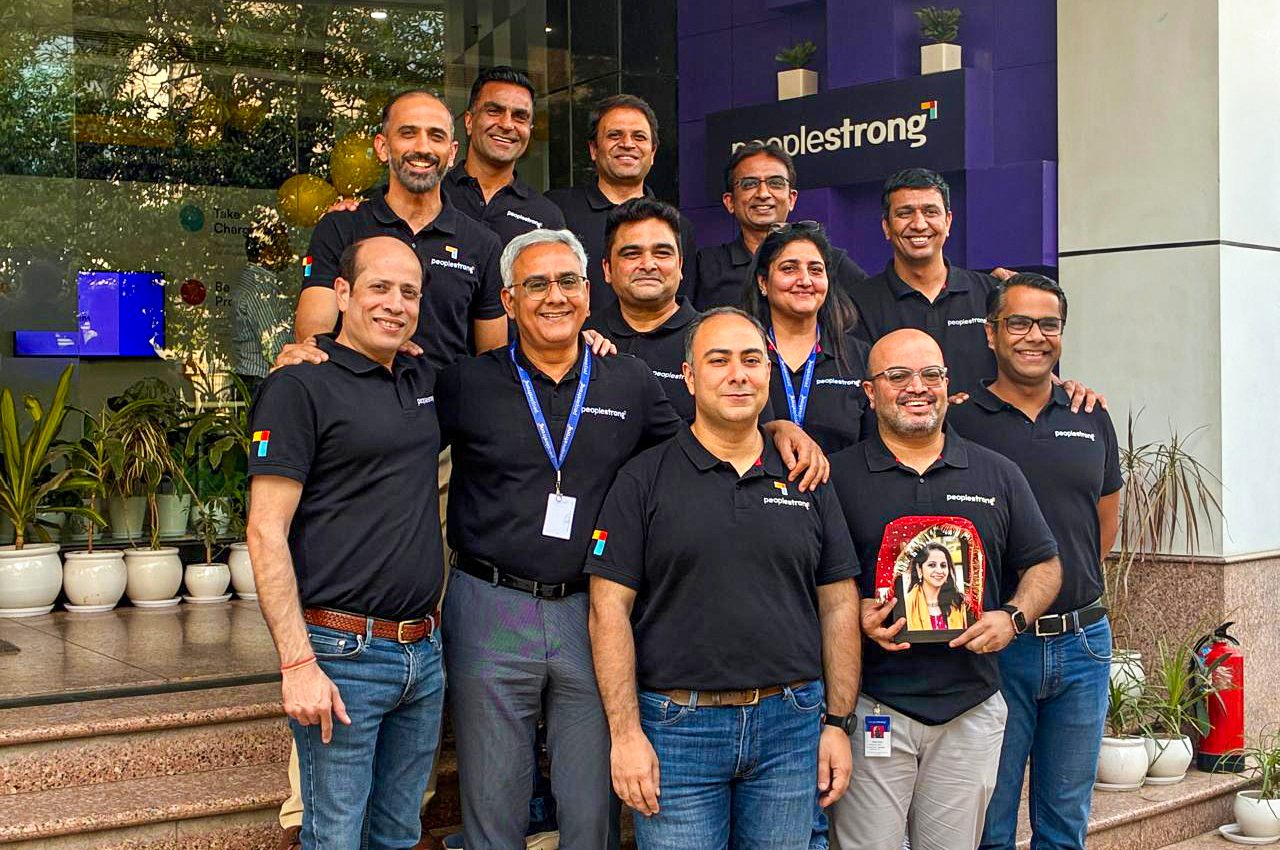Developing a digital recruitment strategy is important—but challenging to nail. Today, only 4% of organizations believe they are extremely effective at hiring the talent they want:
So, what are the contributing factors? The inability to hire the right talent in time and find the right skills-fit are the top-two contenders among recruiters.
In this scenario, digitizing your recruitment process and using recruitment-based digital tools is a step in the right direction if organizations wish to stay top of mind. In this comprehensive guide, we’ll learn how you can leverage—and optimize—the digital parts of your recruitment process. Let’s go!
Suggested Read:
Recruitment Process Guide For HRs to Hire Top Talent
What is Digital Recruitment?
Digital hiring goes beyond putting up job postings on LinkedIn. Digital recruitment refers to the hiring process of finding potential candidates using online channels such as a career site, social media platforms, mobile apps, online job boards, and so on.
Hiring managers leverage a mix of digital recruitment strategies and digital tools to get their hands on top talent and improve the candidate experience, from start to finish.
Traditional to Digital: How Recruitment Has Grown
Traditional recruitment methods like walk-ins, job postings, and referrals are paving the way for their digital counterparts.
Walk-ins are now replaced with virtual tools and remote hiring that bring the recruitment experience online.
Job postings are giving way to social media recruiting, where hashtags and shares are the new job boards.
Referrals that once relied on word-of-mouth are now finding footing across digital networking platforms.
The world of recruiting is becoming more connected but not smaller.
Here’s a quick run-through of how traditional recruiting is converting into a digital powerhouse:
| Traditional Recruitment Process | Digital Recruitment Process |
| Entails: Creating a job ad Sifting through resumes manually Conducting in-person interviews | Comprises of: Posting job descriptions on online job boards, social media, etc. Using data analytics to target specific candidate pools Engaging with potential hires through virtual job fairs and online networking events Using AI tools to automate initial candidate screenings |
| Can take weeks or months to find the right candidate Is costlier due to added expenses such as job postings and advertising | Takes less time thanks to an efficient, streamlined, and quick recruiting process Is more cost-effective as online postings are cheaper, and social media can be used for free |
| May not always help reach a diverse group of candidates as it relies on word-of-mouth referrals, print advertisements, and walk-ins | Attracts a more diverse group of candidates from a global network as it uses social media handles, applicant tracking systems, and targeted ads to reach highly interested candidates |
| Less transparent and time-consuming for candidates Offers limited opportunity for collecting and analyzing data | Provides a transparent process where candidates can easily track their application status Allows for collecting and analyzing data routinely |
The writing is on the wall: The inevitable shift to digital recruitment offers increased efficiency, lower costs, better outreach, and data-driven decision-making for organizations. Plus, recruiters can target quality candidates, drive quick resume screening, and deliver a game-changing candidate experience with recruitment software. As technology evolves, digital recruitment will continue to supercharge the recruitment landscape.
Digital Recruitment: What’s In It for You?
The foundation of a robust digital recruitment strategy starts with finding the right recruitment technology. With strategic tools and systems in place, online recruitment strategies bring multiple benefits to the table. For example, LinkedIn’s most recent report provides insights into the use of AI in recruitment.
- Wider reach: Driving virtual interviews allows recruiters to remove the geographic barrier and connect with candidates globally.
- Greater efficiency: Without digital tools, recruitment managers have to manually sift through resumes, arrange interviews on phone calls, and track the candidates’ information in spreadsheets—a time-consuming affair. A digital tool can take over and automate these repetitive, labor-intensive tasks. This allows HR professionals to focus on higher-value tasks and hire top-notch candidates on the fly.
- Improved candidate experience: Much of your recruitment process depends on how good or bad the candidate’s experience is:
- Is the application process tedious for candidates?
- Is it shorter? Does it ask relevant questions?
- Is the process transparent and flexible?
Digital recruitment tools help iron out these issues that candidates face and deliver a quick, easy, and enjoyable application process.
How to Build a Digital Recruitment Strategy?

A recruitment process has multiple moving parts. Here’s a step-by-step guide on how to create a foolproof recruitment strategy plan:
Step 1: Understand Your Organization’s Hiring Needs: Define your hiring goals and the talent required to fill skill gaps.
Step 2: Audit Your Current Strategy: Assess the effectiveness of your hiring process by analyzing KPIs, defining roles, and evaluating job advertising formats.
Step 3: Experiment with Your Approach: Recognize that different roles require different strategies, and use niche job boards if necessary.
Step 4: Collect—and Act—on Feedback: Gather candidate feedback, especially during exit interviews, to improve the recruitment process. Leveraging a QR code generator, recruiters can create unique QR codes leading to feedback forms or survey links, making it easier for candidates to provide insights post-interview and for HR to analyze and act on this data efficiently.
Step 5: Ensure Consistency: Implement a long-term recruitment strategy, including building a talent community and maintaining consistent messaging.
Suggested Read:
10 Proven Recruitment Strategies to Attract Top Talent
Build a Winning Digital Recruitment Strategy with 6 Tips
Let’s deep-dive into how to build winning online recruitment strategies:
Tip 1: Amplify Your Search With Meaningful, Relevant Digital Content
Meaningful and contextual digital content serves as a tipping point for engaging genuinely interested candidates.
There are multiple digital channels at your disposal to spread the good word. For instance:
- Add weekly blogs to your websites on topics of interest to your candidates, like must-have skills in 2024, and optimize with SEO to improve visibility.
- Create a fan-following with value-add social media posts like short videos offering tips on how to ace interviews. LinkedIn and Instagram are powerful platforms for building your presence. Consistently sharing valuable content, engaging with your audience, and using the right hashtags can help you grow organically, while options like buying Instagram followers can provide an initial boost for greater visibility among job seekers.
- Create a community of like-minded talent with consistent posting on online job boards about new lucrative job openings.
You can use PeopleStrong’s templates that offer skills-based suggestions to write a relevant job description:

The template allows you to create jobs for open positions with accurate skill suggestions needed for a particular role and job title. Plus, the platform enables you to integrate your job listings across social media platforms, internal portals, and 3500+ job boards in one click!
Tip 2: Revisit Your Recruitment Metrics and Get a Reality Check
They say you can’t succeed at what you don’t measure—and your digital recruitment strategies are no exception.
So, start by revisiting your recruitment process. Look for blind spots and gaps within the process to identify what areas to improve and, by extension, what metrics to track:

If this seems overwhelming, turn to recruitment software, which will help you:
- Calculate the selection ratio
- Track manager and candidate job satisfaction levels
- Assess the quality of hires
PeopleStrong offers insights into key recruitment metrics via in-depth reports and analytics, from requisition to onboarding:

Using this tool, you can:
- Analyse and monitor assessments, sourcing channels, etc., and optimize your hiring efforts
- Drive informed data-backed decisions with real-time candidate analysis
- Monitor hiring metrics regularly and eliminate issues on the go
Tip 3: Work on Your Employer Brand and Reputation
A strong employer brand is the glue that will keep high-quality talent within the organization and attract top candidates. To strengthen your brand’s digital presence, consider SIXGUN, a leading digital marketing agency in Melbourne.
A digitized recruitment process can improve the employee experience—as it did for Pacific Healthcare.
Challenges faced:
- Inability to offer local language support such as Thai, Bahasa, Khymer Cambodia, and Vietnamese languages
- Unresolved overtime scenarios
- Lack of integration of the Career portal with local language job boards
- Poor customization
The strategy: The brand leveragedPeopleStrong’s digital recruitment software and mobile app to automate payroll and provide a seamless integration between local job boards and the career portal. This further ensured a smooth experience for candidates and new employees.
The impact:
- 74% increase in mobile adoption
- 700+ HRIS transactions in three months
- 100% accuracy in payroll processing
- 100% automation in leave and attendance module
- 2-3 days’ worth of work saved with automated payroll processing
- 1300+ leaves processed in 3 months
Tip 4: Optimise the Online Candidate Experience
Supercharging your candidate experience starts at their fingertips, quite literally. A mobile-optimised recruiting experience allows candidates to apply for jobs on the go!
Users can get instant answers to their queries thanks to an AI-powered voice-enabled virtual assistant, Jinie. She is trained to answer wide-ranging employee queries, from leave balance to payroll and course suggestions:

A mobile app also drives collaboration between teams, employees, and managers. Hiring professionals can:
- Form workgroups based on function, grade, or location
- Share information with threaded conversations, documents, and media sharing on the fly
- Engage employees with interesting polls, posts of appreciation, and wall of fame
Tip 5: Use a Pre-employment Assessment Tool to Your Advantage

A pre-employment assessment tool helps fast-track the recruitment process instead of letting hiring managers drown in a pool of resumes. You can use it to:
- Validate the candidates’ skills and ensure they meet the requirements for the job
- Assess the candidate’s cultural fit and see if they will be able to align with your company’s values
- Automate the initial screening process and save time as well as effort, a boon given that nearly one-quarter of a hiring manager’s time is spent screening applications
Tip 6: Create Feedback Loops And Apply Learnings Across the Recruitment Funnel
Talent acquisition costs are on the rise. Even a small mistake can cost hiring managers dearly. To make the most of your recruitment process and build a creative workforce, it’s important to get as much feedback as possible about what’s working within your recruiting process and, more importantly, what isn’t.
With the insights gathered, you can tap into a stream of high-quality passive talent and build a relationship with them. Plus, using technology helps you to identify candidates with the right skill set your organization needs.
When leveraging recruitment automation for collecting feedback, pay close attention to the message you’re sending out. You want your employees and potential candidates to know exactly how you are going to act on their inputs and help them work on areas they’re actually passionate about.
Digitize Your Recruitment, Hire with a Click!
Digital recruitment is no longer a diamond in the rough—and there’s never been a better time to revisit your recruitment process.
Used strategically, digital tools are bridging the gap between employers and job seekers.
Hiring managers can find the best-fit candidates for specific roles in just a few clicks instead of getting caught up with admin tasks. On the other end, candidates can work in organizations that value their presence and enjoy greater work satisfaction.
If you want to transition your recruitment efforts from offline to online, leverage PeopleStrong Recruit—an intelligent, scalable, and all-in-one recruitment solution for all your hiring needs.














